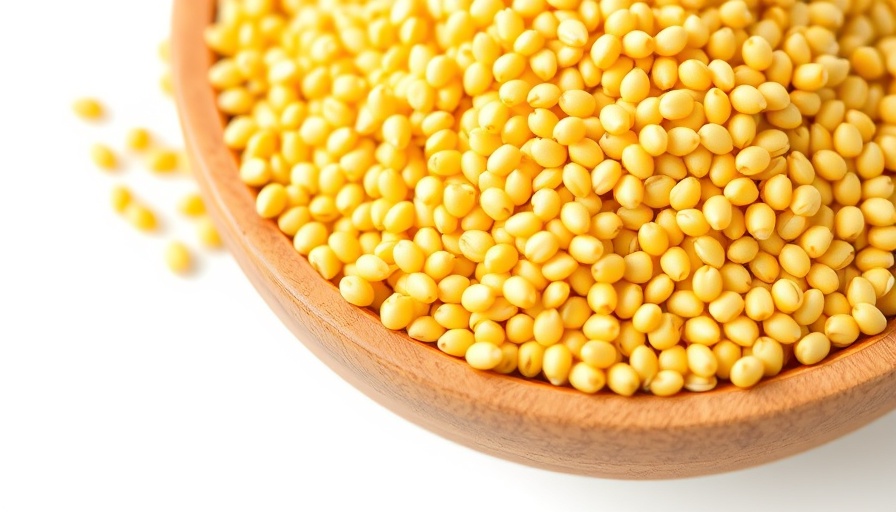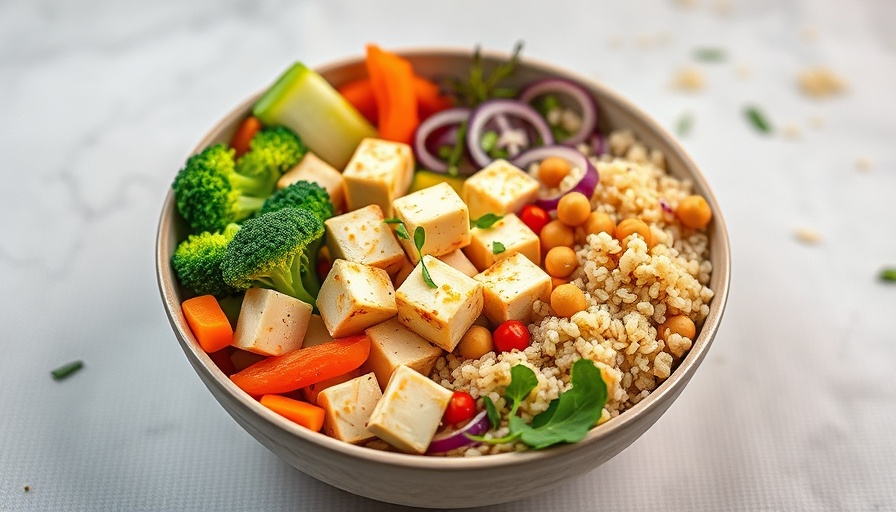
Understanding Millet's Role in Diabetes Management
Millet is reshaping how we think about managing diabetes. Recent studies show this ancient grain, particularly proso and kodo millets, can play a pivotal role in aiding blood sugar control. A randomized crossover study involving hundreds of participants with diabetes revealed that incorporating only a little over a cup of millet into daily diets not only lowered their hemoglobin A1C levels profoundly but also decreased dependencies on insulin. This marks a breakthrough for those struggling with the relentless challenges of diabetes.
How Millet Stays in the Game Longer
One of millet's fascinating properties is its resistance to digestion in the small intestine; it's high in resistant starch. This characteristic benefits our gut bacteria, turbocharging our digestive health. Millet's protein structure lays a protective barrier around its starch, thus slowing down how quickly we digest it. Research indicates that millet can linger in the stomach for over five hours, compared to common starches like white rice and pasta that make way for digestion much faster. This delays the influx of sugars into the bloodstream, potentially minimizing harmful spikes in blood sugar levels.
Successful Outcomes on Blood Sugar Levels
In clinical settings, the effectiveness of millet has become increasingly evident. A study with prediabetic participants showed promising results after six weeks of incorporating just three-quarters of a cup of millet into their diets, leading to a significant drop in fasting blood sugars. Participants who started with an A1C of 8.37 saw a decrease to 6.77 after a millet-rich diet. The significant drop indicates that millet may have properties specifically beneficial for diabetes management, suggesting that it’s not just weight loss but the millet itself that contributed to such improvements.
Complementing Millet with Other Foods
While research highlights the unparalleled benefits of millet, it also points out that simply consuming millet isn't enough. The crossover studies mixed millet with black lentils and vibrant spices, a method enhancing its health benefits. A varied diet rich in whole grains and vegetables, combined with mindful eating practices, is essential for those looking to manage blood sugar levels effectively.
Practical Food Tips to Incorporate Millet
For those unsure how to include this super grain in their meals, millet can be cooked as a porridge, added to salads for a crunchy texture, or even used as a base for dishes like veggie burgers. Its less common but equally delightful cousins—kodo and proso—may be less familiar but also provide similar benefits. These variations allow for culinary creativity and variety, making healthy eating enjoyable.
Navigating Misconceptions of Whole Grains
Despite its numerous health benefits, some may hesitate to embrace millet due to misconceptions. Many individuals regard white rice as the go-to staple for their meals, unaware of the superior nutritional profile millet has. Bolstering awareness about these healthy alternatives can change how communities perceive traditional diets and potentially implement better nutrition choices.
Looking Towards Future Dietary Trends
The growing body of evidence supporting millet is paving the way for future nutritional guidelines aimed at tackling diabetes. As health and wellness trends shift towards plant-based diets rich in whole grains, millet stands poised to become a star. Its adaptability and health benefits seem destined to inspire a new wave of interest in the grain, further encouraging sustainable eating practices.
As we notice millet making a mark in the nutrition landscape, it's important to stay informed about emerging research that continues to explore its full potential. Adopting millet in our daily diets could be a small but powerful step towards improved health and a balanced lifestyle.
 Add Row
Add Row  Add
Add 




 Add Row
Add Row  Add
Add 

Write A Comment